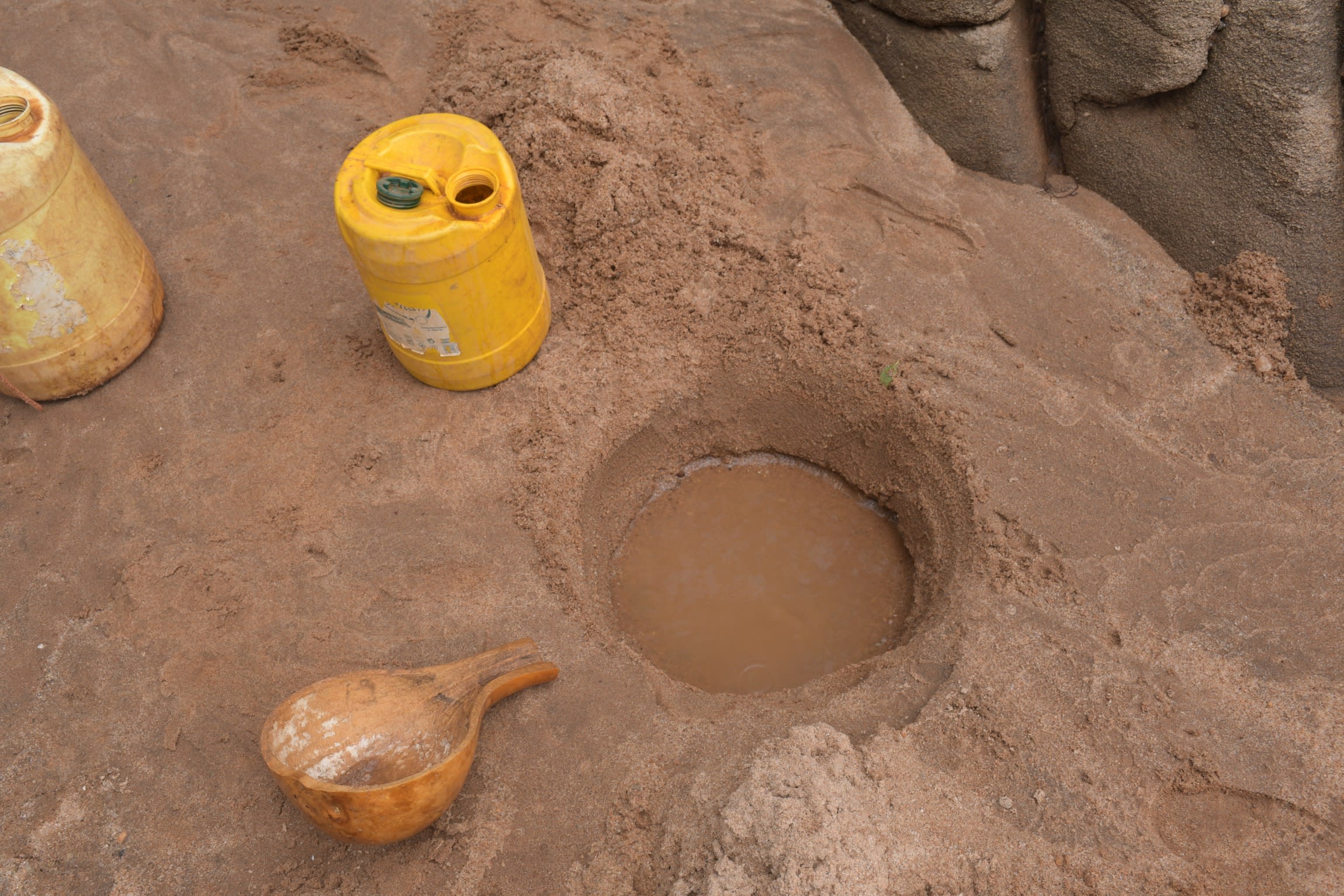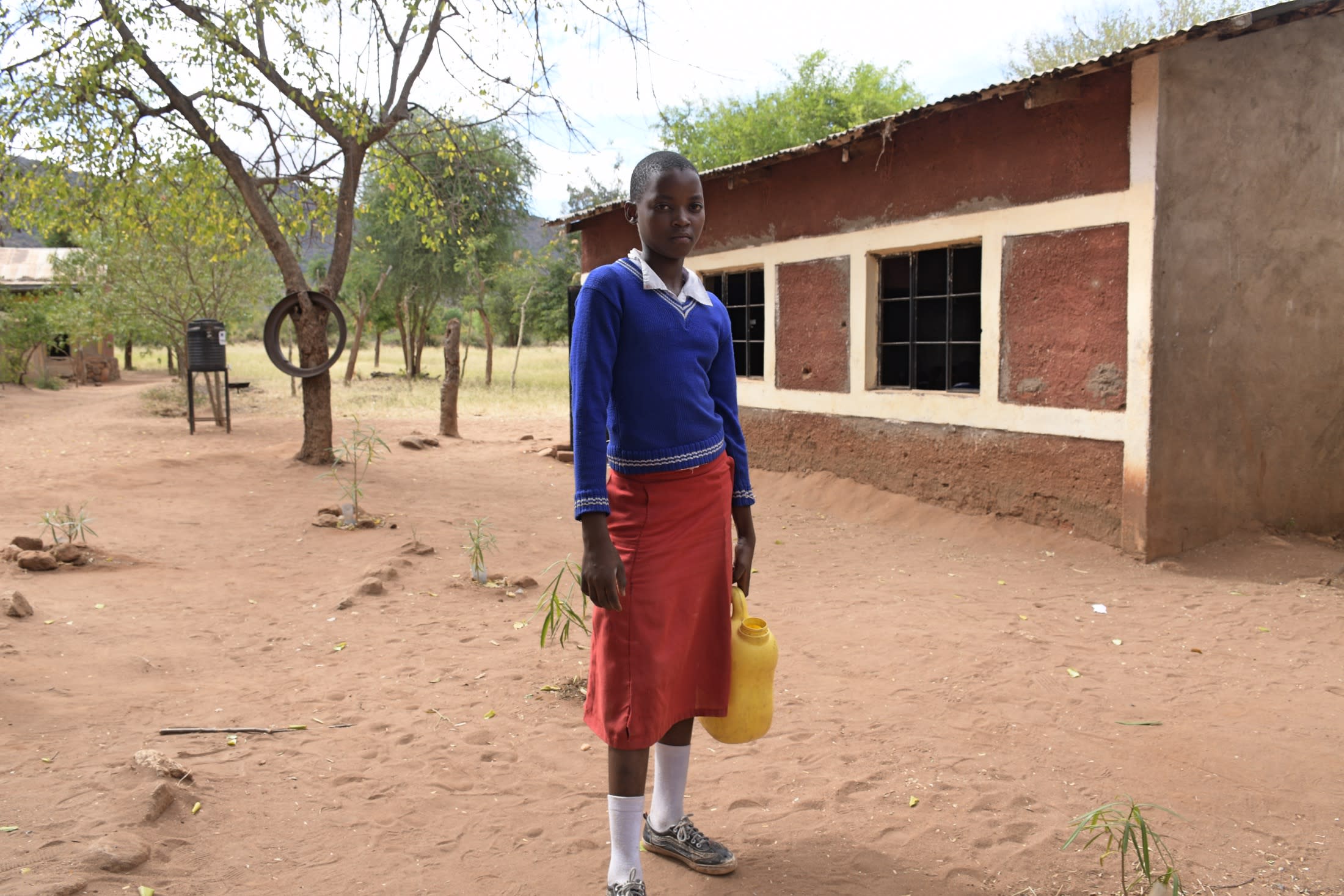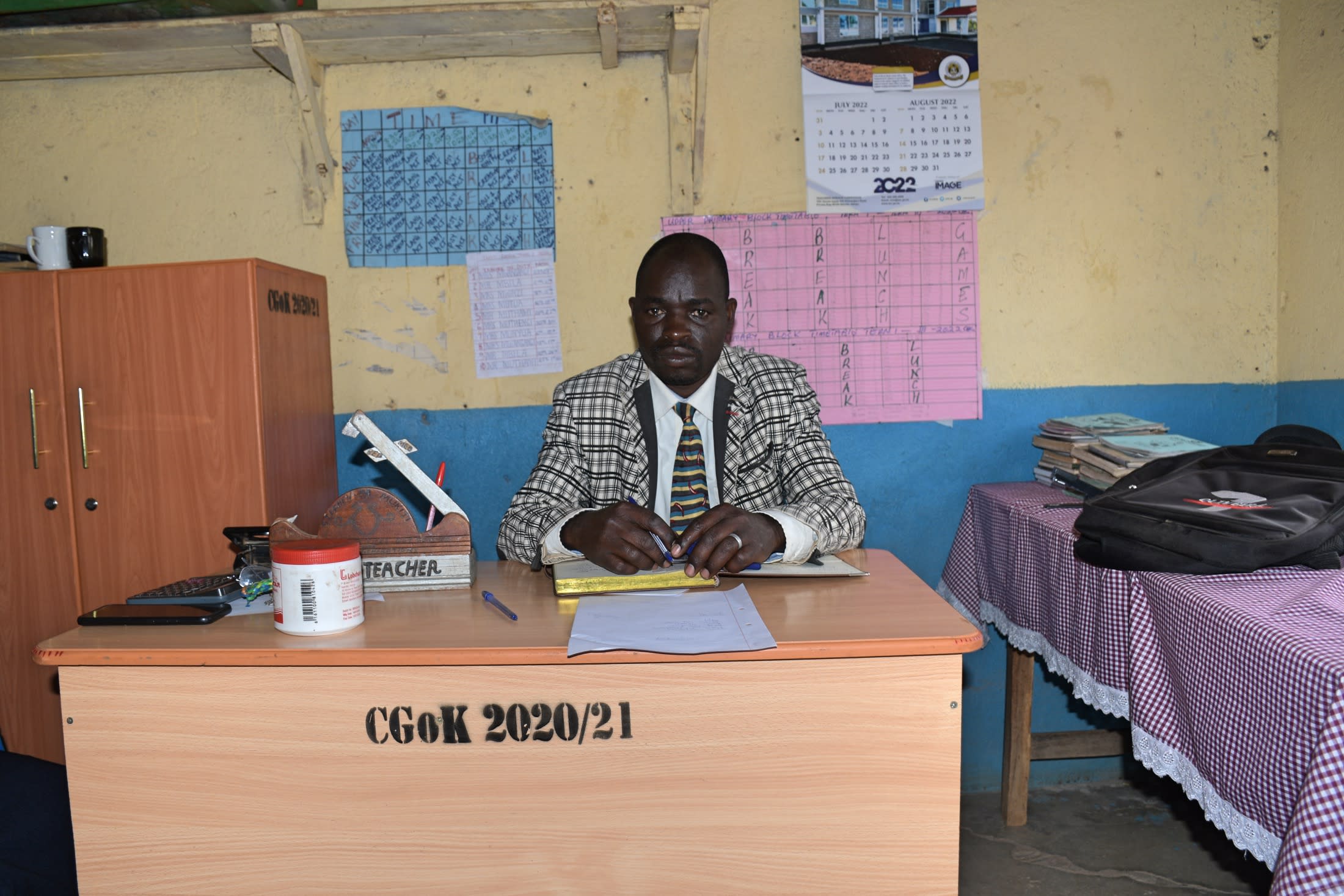School administrators at Ngungani Primary School ask the 172 students and 12 staff members to bring their own water with them to school each day. Except, most of the time, the students have no water at home to bring because, in this drought-ravaged region, water is scarce everywhere.
If there isn't water to spare at home, students' only option would be to fetch water on the way to school, which sounds simple. But this means walking about five kilometers (3.1 miles) to the nearest dry riverbed, where people have dug scoop holes (like the representative one shown in the picture below) to reach the water beneath the dry ground. After this, they must continue their long journey to school through the dusty, drought-stricken terrain.

With all this effort spent for just one day's worth of water, it's understandable why so many kids just skip school when they don't have water at home.
"I hardly get enough water to drink and end up attending my lessons while thirsty, which affects my concentration in my class," said 13-year-old Mary K (pictured below). "This week (and as usual), we only swept our class rather than mopping it, which affects [our] learning environment. I also have to carry water for about three kilometers (1.86 miles) to school, leading to lateness. Like last week, there [was] no water at home, and my mother had to borrow [some] from our neighbor. Conducting personal hygiene is also a challenge since water has to be used sparingly."

The school does have two small rain tanks whose capacity amounts to 10,000 liters of water. But, unfortunately, they dry up almost immediately after each rare rainstorm. If it rained more often in this region, the tanks would have ample opportunities to fill up, but since it only rains a few times a year, the tanks mostly sit empty. The school has been unable to buy or build anything larger because such a large construction project is an expense they can't afford.
The water from the rain tanks is even more precious because the water students bring from the scoop holes is salty and brown. The saltiness of the water means it can't be used to cook food properly. So, when there isn't water in the rain tanks, the school's meal program stops entirely, meaning the pupils must go the entire day without food or water—another devastating blow to their ability to concentrate in class.

"The rampant water shortage means students do not have enough clean water to drink or [for] meal preparation," said 46-year-old headteacher Stephen Mukiti (shown above). "Conducting agriculture programs [for the agricultural students] is also difficult, which has contributed to absenteeism and poor academic scores. I also do not get clean water to drink, since purchasing [it] is mostly unavailable and costly. Setting up more school structures is also negatively affected by the acute water shortage. I sent several pupils home for treatment [today] due to illnesses caused by water-related infections."
As Mr. Mukiti said, the untreated water from the scoop holes hurts the students' health. The scoop holes are open to contamination from dust, animals, and more.
"According to the school's headteacher, students have often been diagnosed with typhoid, stomach upsets, amoeba, and other chronic infections, to the extent of being admitted [to the hospital]," said our field officer, Alex. "They are usually sent home to seek medication, leading to time wastage and subsequently dismal academic performance."
The students at Ngungani have so many odds stacked against them. A high-capacity rain tank right within the school grounds will hopefully grant them more opportunities for better health and education in the future.
Rain Tank
We will build a 104,000-liter rain tank for this school, making the others look tiny in comparison. Because of how rarely it rains in Southeastern Kenya, this tank's large volume is designed to store as much water as possible during the seasonal rains, making more water available through the dry months. This water will benefit the students, teachers, and supplementary staff.
Parents will mobilize the materials needed for construction, including sand, stones, and water. They will also lend their strength and time to help with the construction. We will complement their materials with a skilled artisan to lead the project in addition to providing the tools, lumber, metal, cement, and gutter system.
As soon as the tank has time to cure, it can begin collecting rainwater for the school's use.
Training
We will train students and staff on sanitation, hygiene, and other topics for 1 day. Those in attendance will form a school health club that will promote good hygiene and sanitation practices both at school and at home. They will learn all of the steps to proper handwashing, how to treat water, and how to keep their environment clean. The school will also be taught how to best oversee and maintain their new rain tank and handwashing stations.
Handwashing Stations
A total of 3 handwashing stations will be installed upon the project’s completion and before training. These are 1,000-liter plastic tanks fitted with 3 taps each, allowing 9 students to wash their hands at once. The student health club and school management will be responsible for making sure the tanks are filled with water and that a cleaning agent such as soap or ash is always available.






 Rainwater Catchment
Rainwater Catchment
 Rehabilitation Project
Rehabilitation Project

























